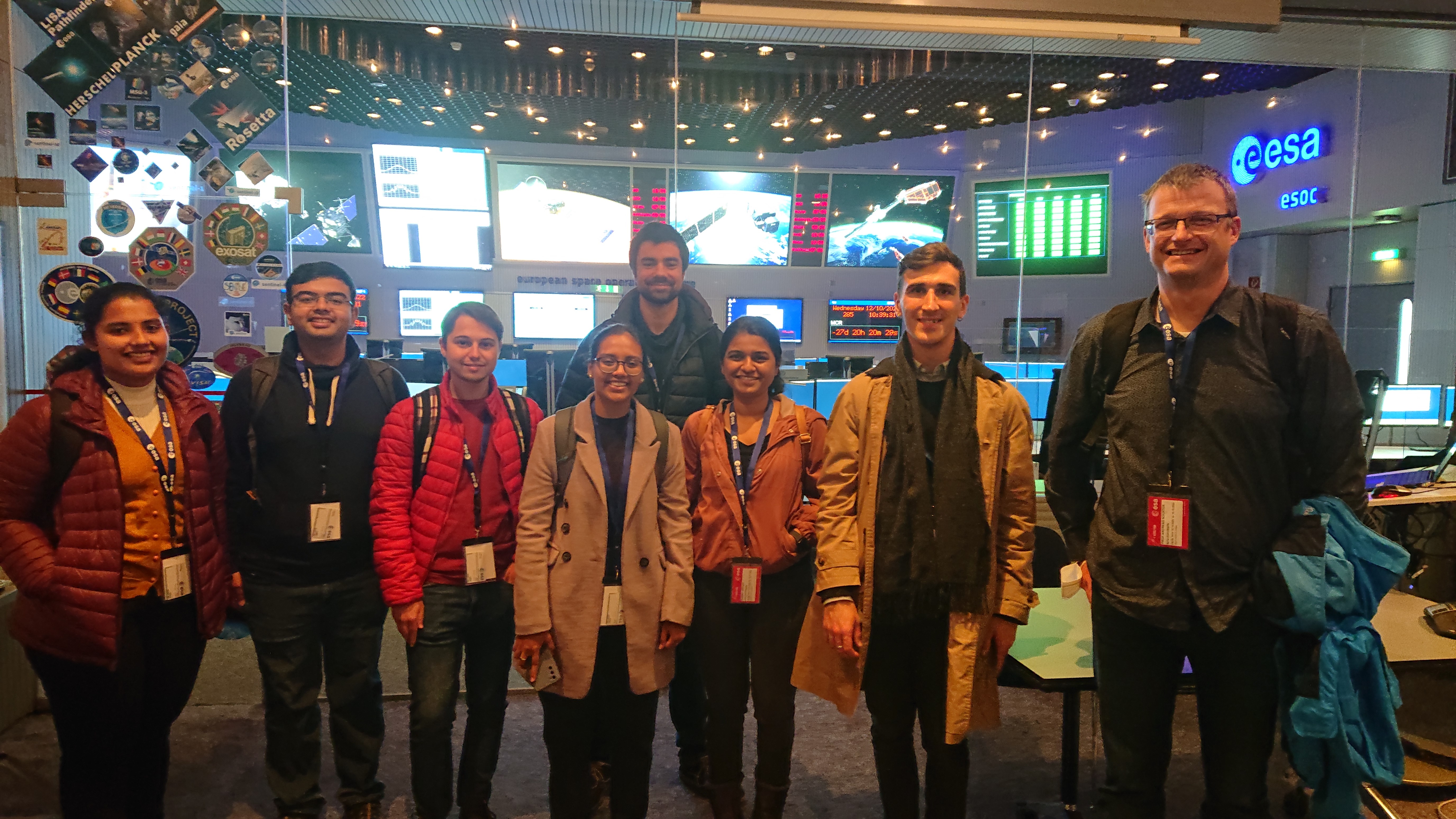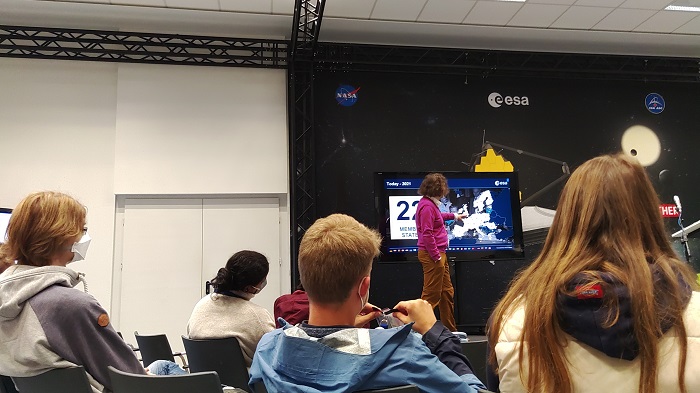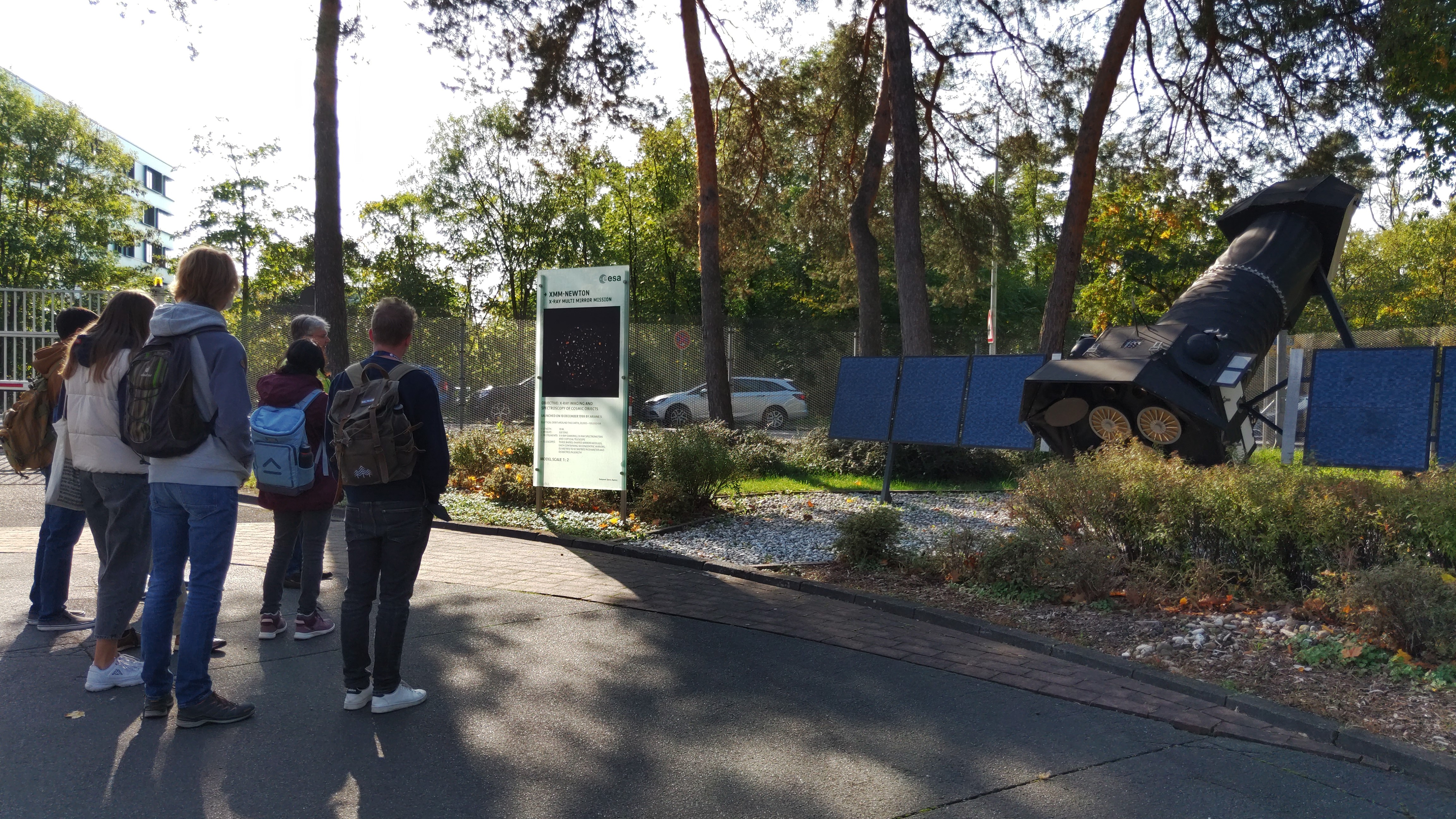Our Excursion to ESOC
Interdisciplinary training of students in all aspects of a satellite mission, from conception to operation characterise the Elite Graduate Program “Satellite Technology” at the University of Würzburg. To learn more about the practice of operating a satellite mission, the students visited the European Space Operations Center (ESOC) in Darmstadt.
Getting to know ESA
Early in the morning, more than 20 students together with teaching staff of the Elite Graduate Program "Satellite Technology" started their trip to Darmstadt to visit ESOC, the satellite control center operated by the European Space Agency (ESA). After a short coffee break, ESA’s Spacecraft Operations Manager Dr. Marcus Kirsch welcomed the visitors in the press center.
He gave an insightful lecture about ESA’s activities in general and after showing key aspects of the organization itself, its budget, member states and sites, Dr. Kirsch impressively presented the successful history of launches and missions.
Operation of satellites in daily practice
With many years of practical experience in operating the now 20-year-old XMM-Newton X-ray telescope, Dr. Marcus Kirsch was able to substantiate his talk with useful practical examples.
He pointed out that in order to guarantee a successful mission, when operating the satellite, the safety of the satellite always comes first. A highlight of the lecture was the report on an incident in October 2008, when the satellite was not responding for several days due to a component failure in a switch. In extreme situations like that, both – the team's many years of experience and creativity in identifying the cause of the error – are required and Dr. Kirsch demonstrated that in a very lively and impressive way.
Another highlight was a live demonstration of real-time telemetry by one of the tour guides and the students got to know how the data appears on the laptop and how commands are sent to the satellite.

Tour through ESOC
In smaller groups the students were guided through the control rooms, including the Dedicated Astronomy Mission Operation Room and the Interplanetary Mission Operation Room. From there, ESA operates various missions. Our students were very impressed by the Main Control Room – known from numerous satellite launches on TV-reports –, a model of Rosetta with its lander Philae and a model of XMM Newton in the 1:2 format. Since the tour guides all worked on this satellite, they were able to share their ex-perience on the spacecraft and could answer many technical questions on the mission in-depth.
Interdisciplinary system engineering
The students in the Elite Graduate Program "Satellite Technology" should understand the entirety of a satellite system through an interdisciplinary approach. With in-depth knowledge of the different subsystems of a satellite mission, students in system engineering should learn to find compromises if conflicts between the subsystems occur. Visits to various space facilities should sensitize the students to the various aspects of a satellite mission, also they get the chance to establish contacts with potential future collaboration partners and employers.
Text: Hermann Helgert



